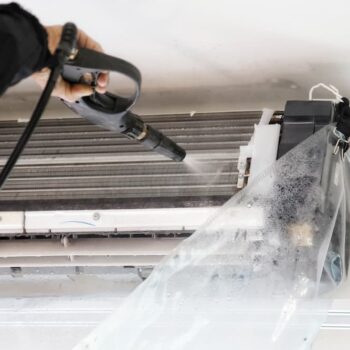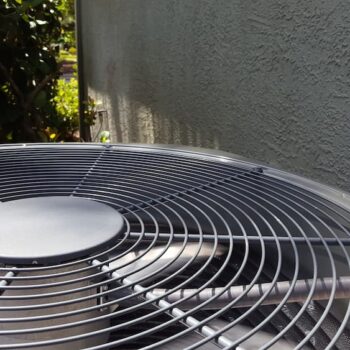
- On December 14, 2021
When it begins to get hot outside, many people turn on their air conditioning unit. This is especially important during the sweltering Phoenix summer months. But do air conditioners actually bring in fresh air from outside? Many people think so, but there is actually no way for an air conditioner to move outside air inside. It’s time to go over the facts.
Where Does the Air Come From?
Looking closely at your outdoor air conditioning unit, you will notice copper lines connecting the indoor and outdoor components. These copper lines are charged with either liquid or gaseous refrigerant. The only thing that passes between the indoor and outdoor elements is this coolant; no air is transferred indoors from outside. Air conditioners recirculate the air inside through filtration systems.
How Your AC Unit Works
An air conditioner return air inlet is generally located on the ceiling of the interior area of your unit. This return air intake grille usually has a filter to keep dust and debris out while still letting air flow through.
As air passes through the filter, it quickly passes over coolant-filled supercooled coils. Before the chilled and filtered air is sent back into your home, heat energy is transferred out of the air and into the coils.
Similarly, air conditioning units draw air in with a fan, removing the heat from the coolant and enabling it to cool before being recycled. The air outside of the air conditioner remains outside but carries heat away from the coils.
How Air Filters Make the Air Fresh
Harmful particles can be found in the air outside that can aggravate allergies and trigger asthma attacks. Before the air outside enters your home, it flows through air filters that trap these particles that contain pollutants and irritants. The result is the air in your home is now healthier to breathe in and feels fresher.
Types of Air Conditioners
There are six varieties of air conditioners, all serving the same primary function with differing approaches to cooling an area. Here are the different types of air conditioners and how they function.
- Central air conditioning – These are the most common type of air conditioner unit, essentially integrating all of the essential air conditioner components into a package, mounted near the building’s foundation or on the roof.
- Window units – These units are mounted in a window frame, usually intended to cool smaller areas rather than a whole building or home. They come with adjustable vents to direct airflow.
- Portable air conditioning – These are similar to window units but are designed to be placed on the floor and can be moved from room to room, wherever needed.
- Ductless air conditioning – Designed for use in homes without ducting systems, they are mounted on the walls in multiple areas to promote air circulation.
- Hybrid air conditioning – This style of air conditioner has the versatility of being plugged into the wall to run on electricity or burn fossil fuels, whichever is most convenient.
- Geothermal heating and cooling is a relatively new two-in-one method to heat an area by extracting heat from the ground to a loop of pipes containing heat-conducting fluid, transferring the warmth to a heat pump, and distributing it throughout the home through air ducts. Air conditioning is essentially produced by reversing this heat transfer. The heat pump removes heat from the air, transfers it to the ground, and returns cool air to your home.
The Experts at Howard Air & Plumbing can Answer Your Questions and Calm Your AC Concerns
Air conditioners do not bring air in from outdoors; it recycles inside air through filtration systems. Howard Air & Plumbing is dedicated to offering proven, science-based indoor air quality solutions for your home or business to provide a safer and healthier indoor environment to beat the Phoenix summer heat.
Keeping cool requires a well-maintained air conditioning system. The expert technicians of Howard Air & Plumbing are here to address all of your HVAC and air filtration needs.
Howard Air & Plumbing is the Phoenix-based HVAC expert you need to answer your questions and concerns!
Image Source: archideaphoto / Shutterstock

















0 Comments